




We asked Jordan Veloso, Head of Stage and Screen at PQA (Pauline Quirke Academy) for his tips.
For many parents and caregivers, preparing a child for a performance can be both rewarding and daunting. Supporting a child as they learn lines, feeling their excitement at sharing their work with others and becoming part of a show is truly special. Performing in a production is a significant milestone that can impact both children and parents profoundly.
Performing can help children improve their confidence, manage anxiety and stress, cope with difficult emotions and take risks. These are valuable lessons for children and their parents too.
To make the most of this memory-making experience, here are three tips to help your child relax and enjoy it:
Provide encouragement and patience
For many children, performing for the first time is a big deal. It might be their first time sharing their voice, dancing, acting or doing screen work in front of an audience. Whether they are shy or excited, providing the right amount of support can make all the difference. Be there for them, stay present and always offer encouragement. Let them know that you’re proud of their effort, regardless of how they feel about it. Your positive energy and belief in them can boost their confidence as they prepare for their big moment.
Show up and cheer them on
Being present and involved in the experience can make all the difference to how your child feels; showing up, cheering and being supportive will help them feel safe and secure. Your enthusiasm and pride in their achievement will reflect the excitement they feel. It’s essential to foster a positive and supportive environment as they embrace the challenge of
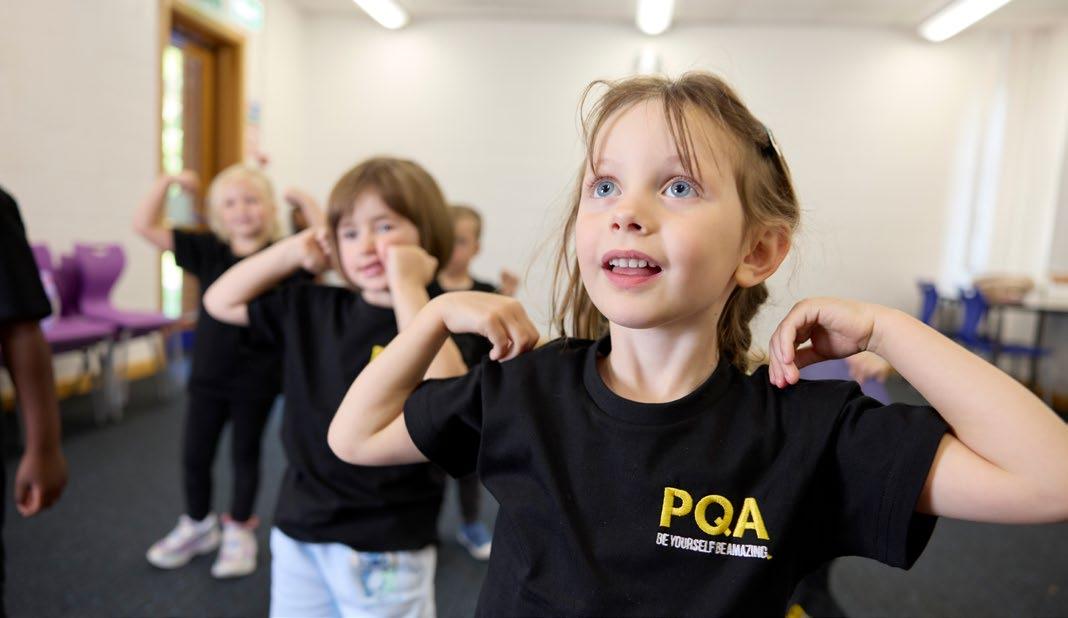
performing - no matter how big or small their role.
Celebrate the journey and growth
After the performance, take time to reflect and celebrate your child’s achievements.
Encourage your child to recognise how well they did and consider how their progress since rehearsals began. Celebrating this success helps reinforce their growing confidence and the life skills they’ve gained, such as resilience, teamwork and emotional intelligence.
It’s also a chance for parents to reflect on how their support and guidance helped their child grow. As your child continues to perform, you’ll both see how the experience becomes easier and how your child evolves into a more confident and well-rounded individual.
To find PQA in your area, visit www.pqacademy.com



Editor Linda Stone info@familiesmagazine.co.uk
020 8241 0423
Next issue: September/October Cover image: www.depositphotos.com Follow us on social media
www.facebook.com/FamiliesUK www.instagram.com
This product is made of material from well-managed, FSC®certified forests and other controlled sources.
Are you looking forward to the long school summer holidays? Or does the idea of having to keep the kids occupied for that length of time fill you with dread? Either way, you’ll find articles to help in this issue.
Discover ways to keep the kids occupied WITHOUT screens and check out our summer reading choices for all ages. Speaking of keeping kids busy, hear from two mums about how they react when their children tell them they are bored. If you’re looking for family outing ideas, have you ever been foraging? Discover the hows and whys in our article. And what do you know about living history? You can be transported into the past at living history events taking place all over the country this summer so check out the highlights in this issue.
Meanwhile, in our Education section, find out how you can improve your child’s comprehension, what constitutes relationship education in primary school and, if your child is starting school in September, are they school ready?
Finally, in this issue, we have some fabulous giveaways including bundles of learning toys from Learning Resources worth £200 each! Apply inside. By doing so, you’ll also ensure you receive our digital magazine and email newsletter with lots more content and goodies on offer.
March/April issue giveaway winners Congratulations to all our winners. You can find a list at www.bit.ly/MA25recipients
5HL. Families is a registered trademark of Families Print Ltd. All franchised
are independently owned and operated under licence. The contents of Families XX are fully protected by copyright and none of the editorial or photographic matter may be reproduced in any form without prior consent of Families XX. Every care is taken in the preparation of this magazine but the franchise owner and Families Print Ltd cannot be held responsible for the claims of advertisers, nor for the accuracy of the contents, or any consequence thereof.
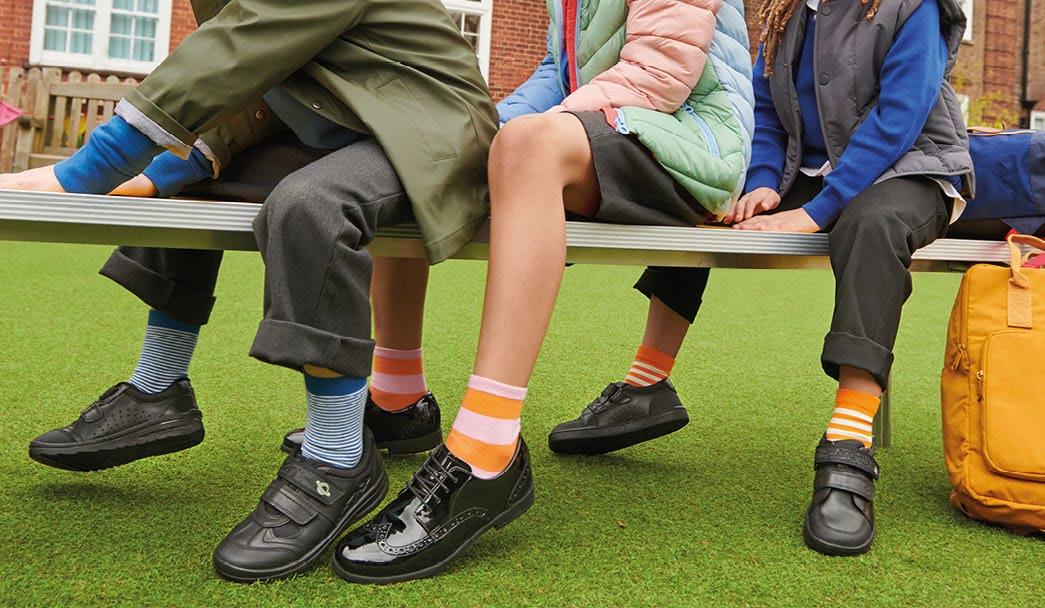

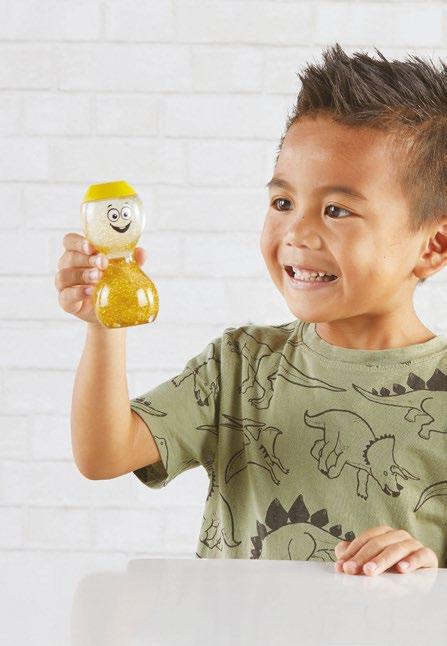

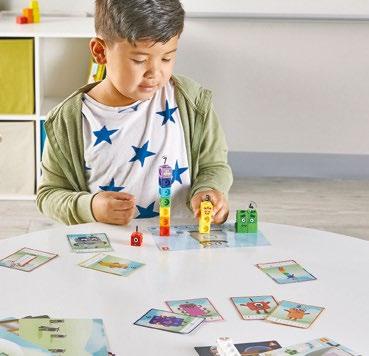
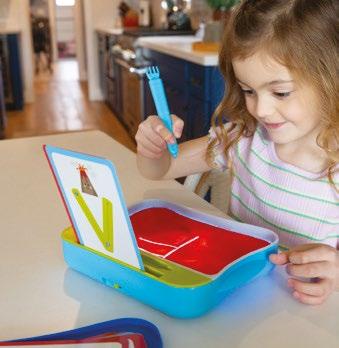

If you are a parent of a child starting school in September, you may be wondering how ready or not they are for this new challenge. So we thought it timely to ask our friends at Learning Journals (www.learningjournals.co.uk) to tell us what ‘school readiness’ really means.
What is ‘school readiness’?
There are multiple interpretations of ‘school readiness.’ Here we explore the definition of the early years foundation stage (EYFS):
‘The broad range of knowledge and skills that provide the right foundation for good future progress through school and life.’
Statutory Framework for the EYFS, 2014
So the above definition refers to children around the age of 5 who are about to start formal education, ie primary school in the UK. Some will refer to this stage as kindergarten.
School readiness can be broken down into multiple characteristics. Understanding where a child is at in terms of these characteristics will determine how ‘school ready’ they are.
Some of these characteristics can be difficult for children to achieve. The important thing is that parents, carers and practitioners are aware of any difficulties and can then put steps in place to provide the right level of assistance.
Self-regulation
This relates to the ability to obtain, maintain and change emotion, behaviour, attention and activity levels in line with a certain task or situation. In other words, how a child can adapt to various situations, be it playing outside or learning inside the classroom.
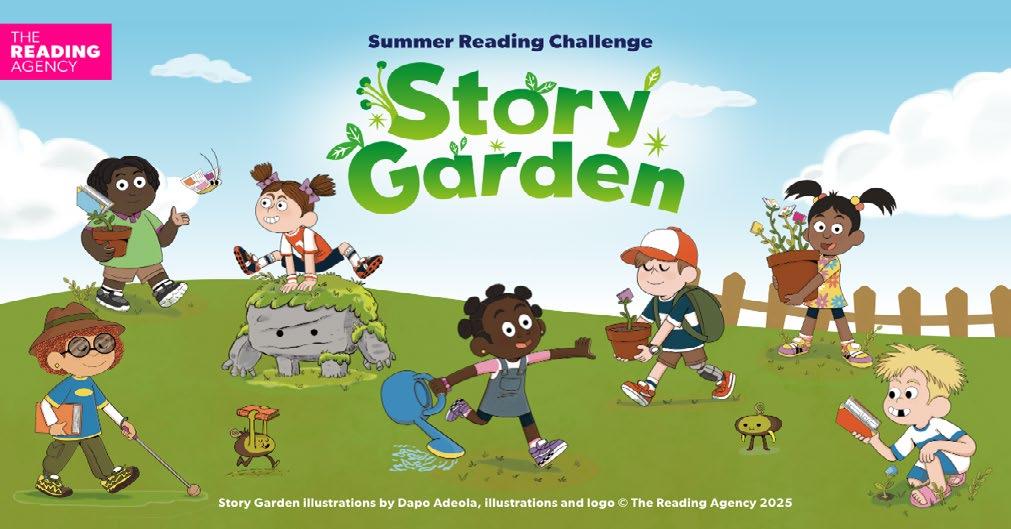
From 5 July to 13 September, the Summer Reading Challenge invites children across the UK to explore the ‘Story Garden.’ This year’s theme celebrates the outdoors, encouraging reading while inspiring creativity and imagination.
The Challenge, designed to promote literacy and a lifelong love of books, keeps young minds engaged over the summer. Children can join by borrowing books from their local library, logging their progress, unlocking activities and earning rewards like stickers and certificates.
Organised by The Reading Agency alongside libraries, this free initiative makes reading fun for all ages and abilities. With plenty of adventures to discover, it’s a perfect way to enrich the school break. Visit your local library to sign up and see your child grow their love for books in the Story Garden. www.readingagency.org.uk
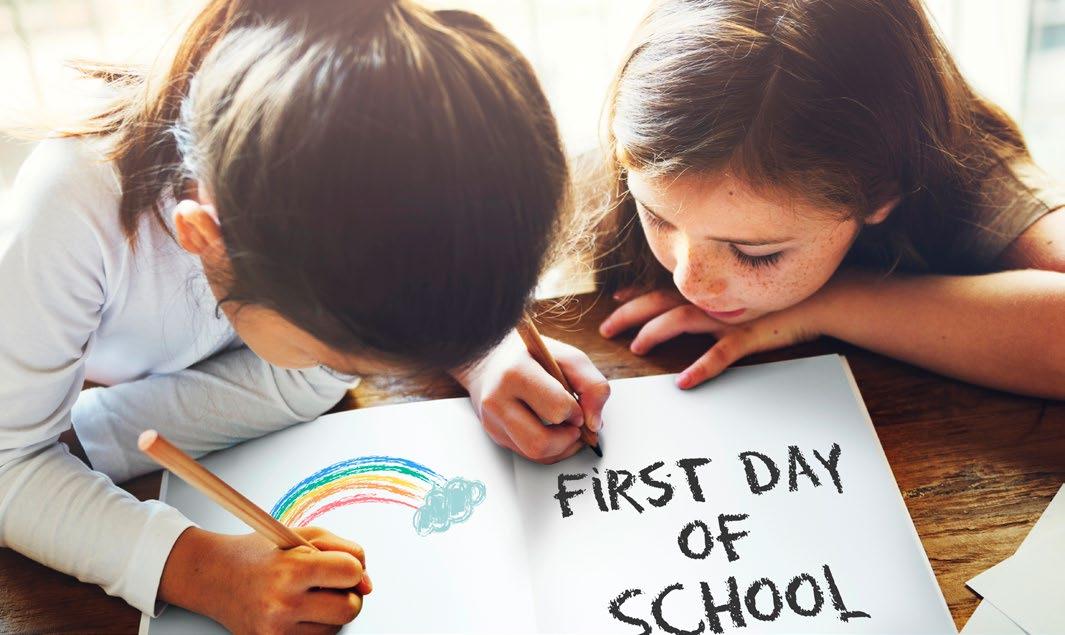
Sensory processing is a form of stimulation that occurs in various environments, as well as in one’s own body that influences attention and learning. This would affect things like how a child might sit, hold a pencil and listen to others.
Receptive language (understanding)
This is a simple one to grasp. Essentially, receptive language refers to how children understand what they hear. They need to be able to understand questions in order to respond accordingly.
Expressive language (talking)
Expressive language links with receptive language. As well as understanding, your child will need to be able to communicate with others to get the most out of their education. In other words, it’s an essential part of school readiness.
Articulation
Articulation is quite similar to the previous two characteristics. It refers to how a child pronounces individual sounds in words.
Executive functioning
Executive functioning relates to a higher order of reasoning and thinking skills. For example, a child who has a pretty good idea of what they need to pack to take to school (eg completed homework).
Emotional development/regulation
Like self-regulation, emotional development is all about how a child perceives and responds to their emotions. Children go through a wave of emotions at a young age, so it’s important for them to understand why they’re feeling the way they are and how to process their feelings appropriately at school.
Social skills
A child’s ability to engage in reciprocal interactions with others, either verbally or non-verbally. School is social, meaning children will need to be prepared to speak with teachers, fellow children and others, without worry.
Planning/sequencing
When it comes to school readiness, planning and sequencing are key. After all, how a child performs a multi-step task or activity will determine how effective they are at developing integral skills that will help them later in life.
You can download a school readiness checklist at the link at the bottom of this page.
Problems with school readiness
You can tell your child has problems with school readiness when they:
Get easily frustrated or are irritable when asked to do something. Rely on you or other adults to get dressed or go to the toilet.
Struggle to follow instructions and/or retain focus.
Are socially immature (ie unable to share, don’t interact well with other children).
Have poor receptive skills (ie can’t articulate). Don’t understand consequences for actions. Resist new activities or the chance to learn new skills.
To discover how to help your child with school readiness, visit www.bit.ly/schready
By Erin Miller
Since September 2020, under the Children and Social Work Act 2017, it has been a statutory requirement to teach relationships education in all primary schools, including maintained schools, academies, free schools and faith schools. Unlike sex education, parents cannot withdraw their child from relationship education in primary schools.
Before 2020, much of what is covered under relationships education would have fallen under the PSHE (Personal, Social, Economic and Health Development) curriculum or been delivered in assemblies. Now schools need to be able to evidence their planning and teaching in the following areas:
Families and people who care for me. Children learn that families come in many forms, including those with same-sex parents or guardians and that all should offer love, care and security. They are taught to recognise the value of supportive relationships with trusted adults who make them feel safe and appreciated.
Caring friendships. This area focuses on kindness, honesty, loyalty and respect. Children learn how to form and sustain healthy friendships, manage conflicts calmly and identify when a friendship is causing unhappiness or harm. It encourages open communication and empathy towards others.
Respectful relationships. Pupils learn to treat others with kindness and respect, valuing everyone equally. They are taught the importance of consent, active listening and responding thoughtfully. The curriculum also emphasises resolving conflict calmly, recognising and addressing bullying and confidently

The relationships education topics outlined above are consistent across Key Stages 1 and 2. However, in Key Stage 1, the approach is more foundational, while in Key Stage 2, the content develops in depth and complexity.
For example, in the area of online safety, pupils in Key Stage 1 are taught basic principles such as not sharing personal information online. In Key Stage 2, they go on to explore more complex issues, including recognising grooming and understanding digital footprints.
Another example is in the context of friendships. In Key Stage 1, the focus is on being kind and inclusive, while Key Stage 2 introduces more advanced topics such as conflict resolution and managing peer pressure.
If you have concerns about the suitability of the topics covered in relationships education or at which stage particular content is covered, you should contact your child’s school. Schools have been advised to consult parents over what is covered in relationships education, so your interest or contribution will likely be valued.

standing up for themselves and others in a respectful and inclusive manner.
Online relationships. Children learn how to stay safe and respectful in online spaces, recognising that people may act differently on the internet. They are taught to protect their personal information, report any concerning content or contact and understand that online friendships deserve the same caution and respect as those in real life.
Being safe. This area helps children learn to recognise both safe and unsafe situations. It covers personal boundaries and body privacy, encouraging children to seek help if they feel uncomfortable. They learn about trusted adults and how to ask for support with confidence.
These important topics should be embedded within a school’s values and daily practice. Not all protected characteristics in the Equality Act 2010 are explicitly mentioned in the statutory guidance for Relationships Education and it may be helpful to explore how your school addresses these areas.
Erin Miller is a teacher with a keen interest in how research can be used in the classroom to improve learning.

If your child’s primary school teaches aspects of sex education beyond the national curriculum, the school must have a policy outlining these details and parents should be consulted about the content being covered.
You have the right to withdraw your child from sex education that goes beyond what is included in the national curriculum for science or relationships education and headteachers are required to respect these requests.
If your child’s primary school offers sex education, it’s important to understand the content of the curriculum. Many primary schools do excellent work in this area, providing graduated and age-appropriate material.
While some parents may prefer to approach these topics at home, a collaborative effort between parents and the school can ensure a sensitive and comprehensive education on these important matters.
Although there are occasional scare stories online about inappropriate material being taught in primary schools, such instances are extremely rare. The vast majority of primary schools excel in delivering this education.
By Sarah Campbell
Looking for the best new books for your family reading this summer? There’s nothing better than sharing stories - and there’s a book out there for everyone! Here are our top picks.

A Good Night’s Sleep by Emma
Ages 3-5
Witty storytelling, stunning illustrations and playful animal characters come together in this gorgeous new picture book. It’s the middle of the night and Maudie would really like a good night’s sleep. Heading to her lovely house in the woods for a wellearned rest, she finds some unexpected visitors in the way…
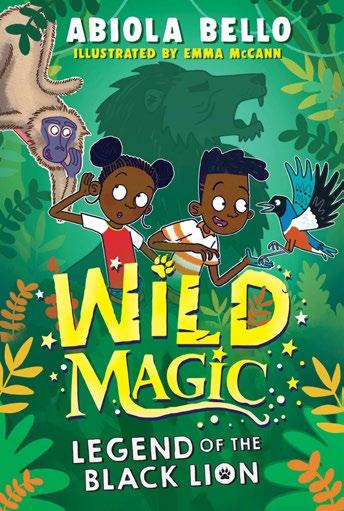
Ages 5-8
The first in a thrilling new series of illustrated chapter books, this story takes readers on a wildlife adventure to Ethiopia, where twins Misha and Ziggy put their extraordinary animal powers to the test. Misha can speak to animals and Ziggy can shapeshift into them but when the legendary Black Lion goes missing, can they keep the whole jungle safe from harm?
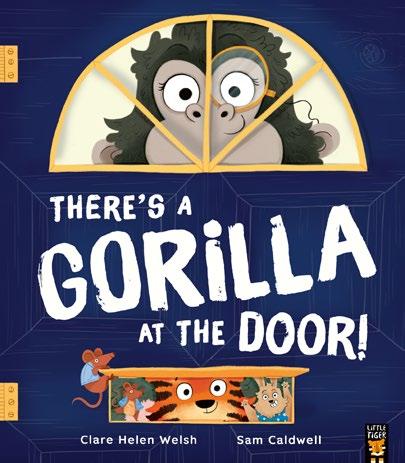
a Gorilla
Ages 3-5
Packed with fun, characterful illustrations, this laugh-outloud story celebrates the joy of difference and belonging in a blended-family environment. Daphne’s mum and stepdad are throwing a family party. It’s going to be so boring. But when a gorilla knocks on the door, a rhino rolls in and a kangaroo pops up, this party is going to get wild!
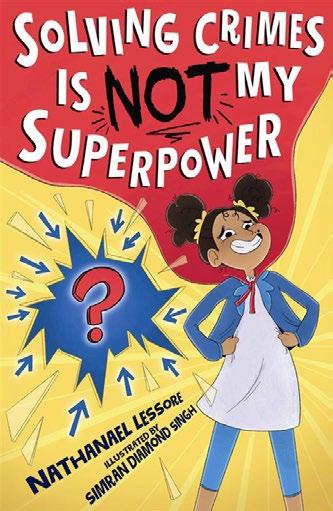
Ages 5-8
Mystery and adventure combine in a story about being extraordinary. Everyone else in Sara’s hometown has been granted extra special powers by a mysterious treasure – but not Sara. She can’t even levitate a squirrel! When the school football trophy is stolen, it falls to Sara to find it and maybe, just maybe, she will discover her super skills in the process.

Ages 5-8
This highly illustrated chapter book is perfect for younger or reluctant readers. Minibeast besties Dash, a firefly and Dribble, a snail, must foil a master criminal plot involving a crystal worm, ancient custard, a stolen Roboslug and some dastardly dung beetles. Riotously good fun, this will have young readers laughing out loud.

Ages 8-12
This is a story about an extraordinary friendship. When Rhys moves to London to live with his estranged dad, he decides to keep secret the lost black Labrador he has adopted – but looking after a secret dog is anything but easy! Told with heart and empathy, Rhys’s story is perfect for reading together as a family.

Ages 5-8
Meet Martie Moose! A quirky character, fun illustrations, humour, adventure and heart combine in a perfect package for newly independent readers. It’s Marty’s first day on the job as Postmouse and he’s ready to go. But things take a tricky turn when he gets lost in Whisker Warren and needs rescuing by a doolally rabbit named Nibbles. Who knew postage could be so perilous!
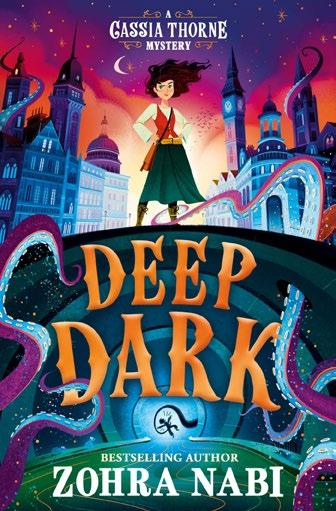
Ages 8-12
With children being snatched off the streets of London, Cassia Thorne and her friends set out to investigate and rescue them before it’s too late. The inspiring lead character, magic, mystery and adventure will have you on the edge of your seats!
Sarah Campbell is co-founder of Parrot Street Book Club (www.parrotstreet.com), an online children’s bookshop for ages 5-14 offering a handpicked collection of high-quality children’s chapter books, plus an award-winning monthly book subscription.
By Jemma Z Smith
Reading is one of the most valuable skills a child can develop but it’s not just about being able to sound out words or finish a book - it’s about understanding it. Inference, a skill often spoken about by teachers, means being able to work out what a character is thinking, their reasoning behind decisions and what they might do next. To help children go beyond the basics, a creative approach encourages that all-important understanding.
When meeting with parents I try to emphasise the benefit of going beyond asking: ‘Did you like the book?’ What other questions encourage your child to reveal how much they have understood?
Firstly, timing is important. Don’t wait until you have finished reading the book to ask questions; make them part of your reading routine. Ask before you read: ‘what might the character do next?’, then, in the middle: ‘why do you think the character made that choice?’ and ‘what would you do in their shoes?’ Then: ‘did the ending of this chapter surprise you?’
Secondly, encourage your child to ask you these questions too. Whilst we might all long for our child to leave us in peace to actually just read the book to them, their questions provide the chance for us to model inference to them. If they are not asking questions, try explaining the book to them (at their level) and say out loud what you hope might happen next.
Thirdly, you don’t have to restrict the questions to fiction books. If your child is reading a poster on the Tube ask them what it is about. Pretend to be too busy to read some instructions and have your child summarise them or ask: ‘what new fact did you learn?’ or ‘would you recommend this to someone interested in...?’ These open-ended questions
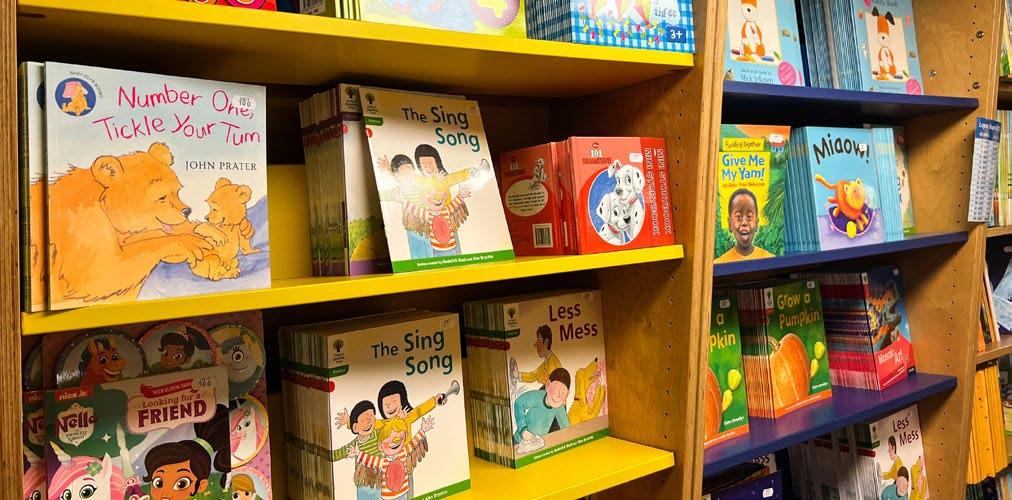
Books can be great starting places for discussions around bullying, technology, motivation etc. Asking the right kind of questions can transform reading from a solo activity into a powerful discussion about values
Here are some examples, based on book types:
Fiction. What would you have done differently to solve the problem? Why did the character choose to do this? How would you feel if you were the character?
Non-Fiction. Would this be a book that you would share with your friends? Would this book be useful for a school project? Why or why not? Can you explain what you read to someone who’s never heard of this topic?
Graphic Novels. How do the pictures help you understand the story? What emotions do the characters show through their expressions? Is the story told differently from a regular book? These questions build, prediction, empathy and analysis - key parts of strong comprehension.

encourage children to think critically and reflect on what they’ve read.
The type of book matters too. Humorous stories are great for picking apart language and tone. Questions such as: ‘why is this funny?’ or ‘can you draw this character?’ can help children to see why an author has described a scene in a certain way. Adventure books are perfect for discussing cause, effect and characters’ motivations. By tailoring questions to the genre, you help children engage more deeply and develop more sophisticated reading skills.
Comprehension is a lifelong skill and developing it doesn’t have to be a chore. By asking thoughtful questions and tailoring conversations to reading material, parents can turn comprehension into something meaningful, enjoyable and confidence-building.
Jemma Z Smith is Director of The Education Hotel. For further advice, visit www.educationhotel.co.uk

The digital world isn’t the enemy of reading; it can actually support it.
Sites like Bookopolis (www.bookopolis.com) allow young readers to log books, write reviews and discover titles based on what others like them are reading. These tools not only make reading more fun but encourage kids to reflect on what they’ve read.
Toppsta (www.toppsta.com) is a great UK-based resource where children and parents can leave reviews and browse age-appropriate suggestions. For teens, Goodreads (www.goodreads.com) and #BookTok on TikTok are popular platforms where they can follow authors, create reading lists and even engage with online book clubs.
If you’re looking for surefire reads, some must-haves include The Worst Witch series or Dog Man for ages 6–8, The Boy At the Back of the Class, Percy Jackson or The Explorer for 9-12s and YA favourites like One of Us is Lying for teens. Pairing the right book with the right child can often be the first step to capturing their interest and getting them talking.
By Liat Hughes Joshi
Technology is thoroughly ingrained in all our lives, particularly those of our children. From an early age, screens are a key source of entertainment and like it or not, highly effective at keeping them occupied.
Amazing though technology can be, it can sometimes all get too much and we need screen downtime. What a joy to actually talk to each other and do things together that don’t involve texting and messaging, tapping and swiping!
As the summer holidays approach, here are my unplugged go-to activities for you to have fun and connect as a family this summer.
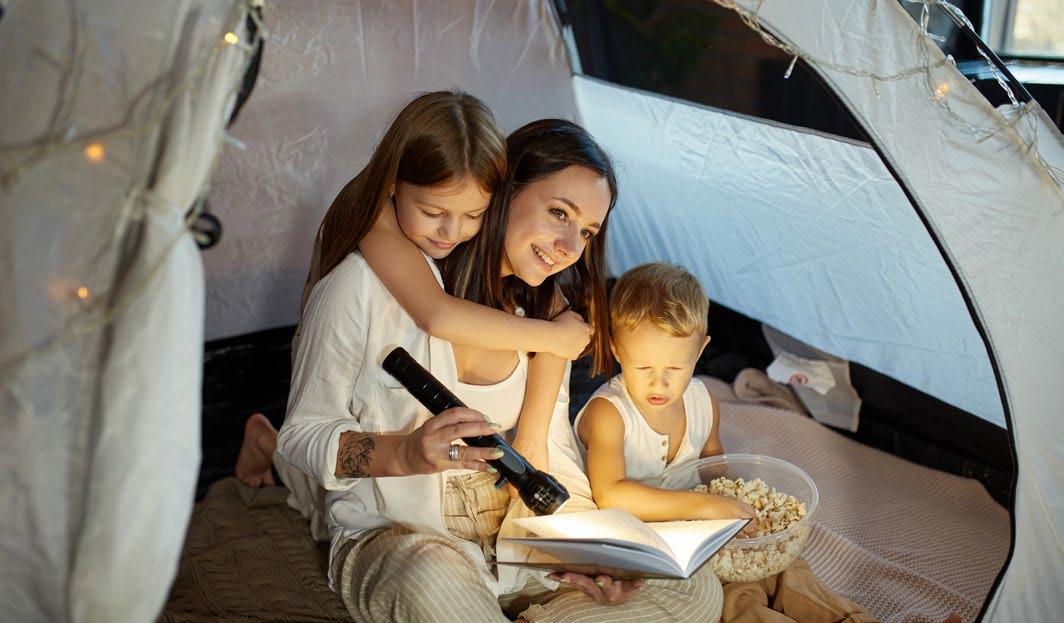
All the upsides of camping (the fresh air, the novelty!) minus the communal bathrooms and forgetting to take the tent pegs. An evening toasting marshmallows on a campfire or barbeque and telling stories by torchlight beats screens any day (hide them and turn off your router if necessary).
What you’ll need: A garden. If you don’t have one, persuade the grandparents or some friends to host. Camping gear – buy secondhand or borrow to keep costs down.
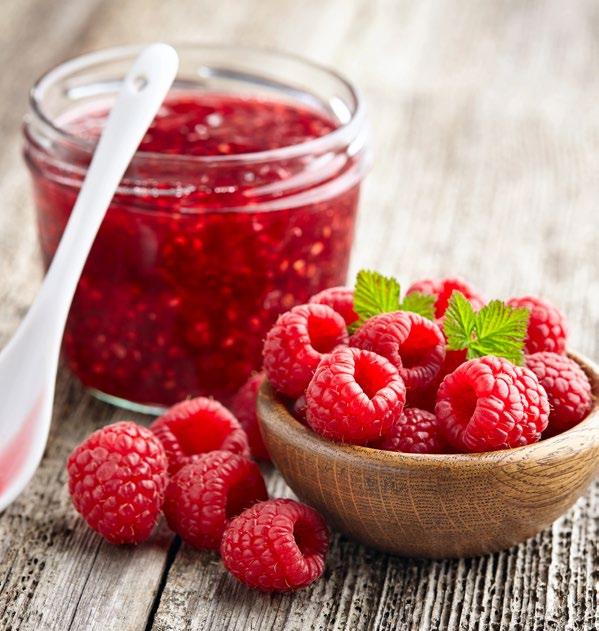

Putting up a garden tepee is surprisingly simple. Place six bamboo canes/stakes in a semi-circle about sixty centimetres apart and push each around two centimetres into the ground. Gently draw the tops together, then tie with string so you have a tepee-shaped frame. Fix your sheet in place with clothes pegs and job done. A blanket as a ground sheet and some cushions will give a ‘glamping’ feel.

What you’ll need: String, six 5ft or 6ft bamboo canes (from a garden centre if you haven’t got any). An old double sheet, clothes pegs, a blanket and some cushions.
Grab some water pistols, soak a few kitchen sponges in a bucket, make water balloons, turn on that garden sprinkler (provided there isn’t a hosepipe ban), herd the kids outside in their swimwear on a hot day and await the soggy mayhem.
Children will need supervision as the jam can get dangerously hot but this activity is brilliant for dealing with fruit overload after foraging or visiting a pick-your-own farm (another great screen-free idea!). Experiment with different combinations and more unusual flavours, such as melon or rhubarb.
What you’ll need: Piles of fruit, preserving sugar, a large, sturdy saucepan or preserving pan, sterilised jam jars with lids and a jam-making thermometer.
garden bowling ‘alley’
Who needs expensive bowling alleys when you can put together your own for free? Raid the recycling bin (ask the neighbours if they have any too) and fill ten or twelve used plastic bottles with water and optional food colouring for a colour-coded points scheme. Place the bottles in the usual triangular formation on a flat strip of ground. Mark standing spots for different age players with a couple of rulers or some tape. Grab the ball and await those first shouts of ‘Strike!’
What you’ll need: Empty plastic
What you’ll need: Water pistols, balloons, sponges, hosepipe and sprinkler; definitely a few towels for afterwards!
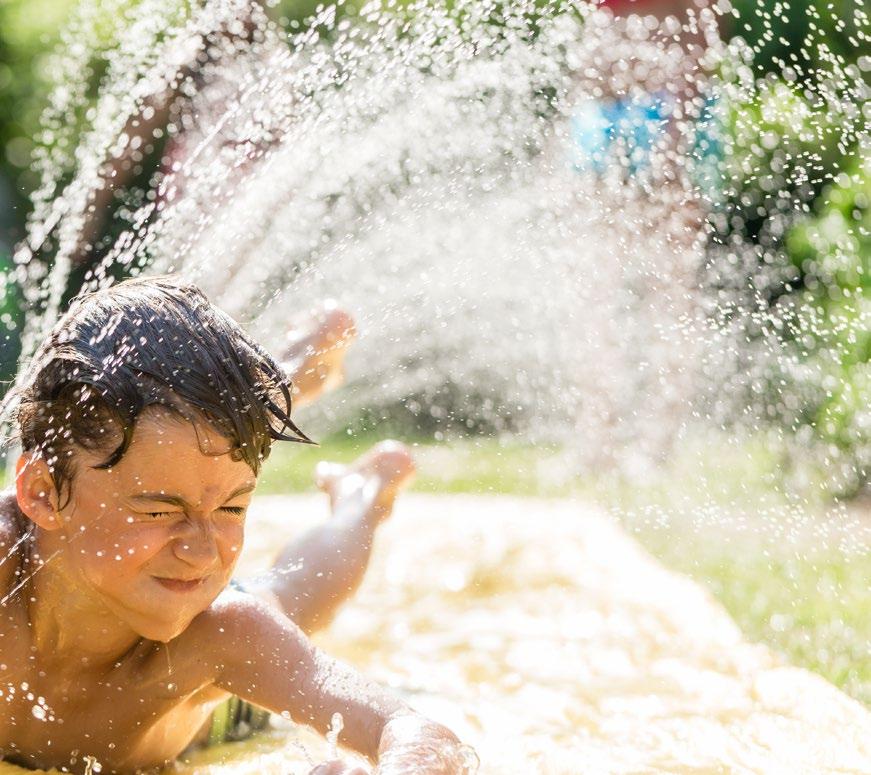
Liat Hughes Joshi is a parenting expert and author. Her new book How to Unplug Your Child (Summersdale) is available from www.bookshop.org

Find an exposed hill or a breezy beach, run along and let your kite soar! If you don’t own a kite, it’s possible to make one with sticks or straws, plastic bags and string, although don’t bank on it lasting the duration. If you can find a kite-flying event even better – they can be quite a spectacle. It’s said that if you build a love of nature in your children before the age of 12, you’ll create a lifelong passion for the outdoors.
What you’ll need: A kite, the park, a field or the beach, free of any overhead wires for the kite to collide with. A breezy day (wind speeds of five to twenty five mph are optimal).
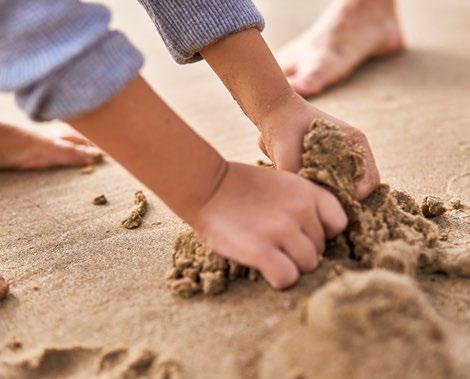
Who says you have to stick with building castles at the beach? The trick to making sand sculptures – be they of animals, letters, cars – is to mix in a lot of water with the sand, creating a muddy consistency. Start off with more basic creations and work up. Look online for ideas before you leave and even older cynics will be heading for the beach before you can say ‘don’t forget the sunscreen.’
What you’ll need: A trip to the beach (or a sandpit for smaller creations at home). Buckets (for water as well as sand). A variety of cups, tubs, etc, plus tools eg spade, knives, spoons, spatula.

Write clues and riddles about the local area, culminating in a mystery destination such as a café or ice cream parlour. Two teams could battle it out to get to the final meeting point. You could draft in local shopkeepers or neighbours who you know well to have clues hidden in their shop or front gardens. This approach can also work well to liven up sightseeing on holidays or days out.
What you’ll need: The imagination to come up with the clues! An accompanying adult for each team if participants aren’t old enough to be out alone.
Sign language challenge
Learning basic sign language is relatively easy, a useful life skill and surprisingly appealing – especially if your child learns with friends and they can then use it to communicate together. Fingerspelling is an undaunting starting point – single signs for individual letters that can be used to spell out words. If your kids get into this, they could progress on to learning whole word signs.
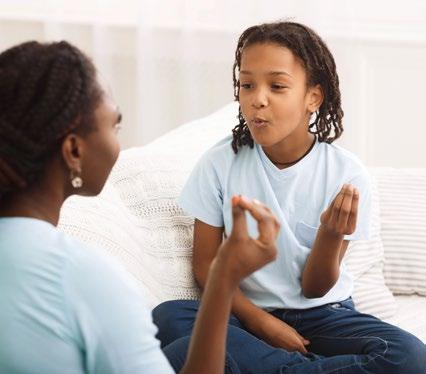
What you’ll need: A sign language guide (online is fine!). Semaphore is another, more unusual skill if they enjoy this.
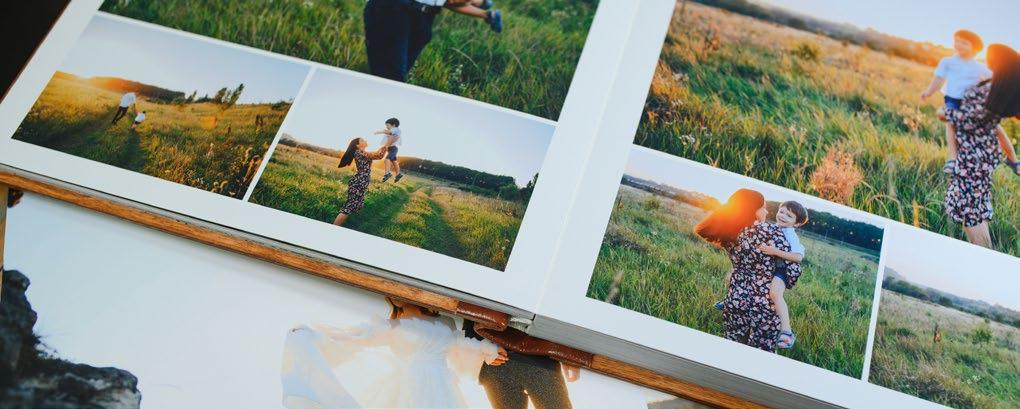
Dig out those long-neglected snaps from the attic and challenge your child to find the top three most embarrassing/amusing ones from days of yore. Prepare for much sniggering at your clothes and hairdos and comments of the ‘but you looked soooo young there, mum’/’you had hair then, dad…’ variety.
What you’ll need: A pile of old pics or albums.
DIY spa day
When there’s no queue for the family bathroom, let pre-teens set up a ‘spa’ at home. Hair and face masks can be created with typical kitchen ingredients such as yoghurt, oats, banana, honey, avocado and chocolate. Salt or sugar scrubs are simple to put together too. Mask and scrub recipes can be found online, while enthusiastic experimenters can concoct their own formulations.

What you’ll need: Kitchen ingredients, tubs/bowls and mixing spoons.
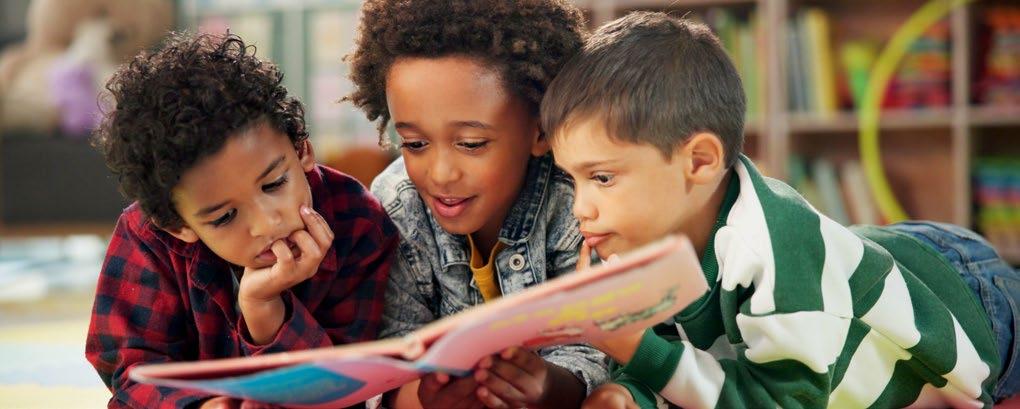
This works best when your kids are old enough to read, using books that appeal to all of them. You can facilitate a discussion about each book which is ideal for parent and child time. Older kids can set up a club with a group of like-minded friends. This could focus on an appropriate genre, such as sci-fi or comedy. Don’t shy away from e-readers for kids – they bring the added benefits of an integrated dictionary and the ability to download new books instantly.
What you’ll need: Books!
By John Shahabeddin
Foraging with kids is one of the most amazing things you can ever do. It gets children exploring outside and engaging with nature. And what’s even better than this? When they get home, their baskets loaded with berries and fruits, they can get to work in the kitchen making yummy treats with the literal fruits of their labours. Foraging is fun, educational and provides hours of fun for the whole family!
Rules for foraging with kids
Never eat or let your kids eat, something that you cannot identify with 100% certainty.
Woods and forests can hide dangers, from rivers and ravines, to log piles and country roads, so be actively aware of your surroundings at all times!
Know what to do in an emergency. Have a charged mobile phone with you at all times and make sure someone knows where you are and a time you’ll be back.
There’s an abundance of wild food almost everywhere you look. You can freely forage the above ground parts of the four ‘F’s (Fruit, Flowers, Foliage and Fungi) on public land (or land you have a right of access to).
So, foraging in public parks, gardens, woods and forests is fine to do, as long as the fruit, flowers, foliage or fungi is growing wild and NOT deliberately planted (e.g. crops or decorative garden beds).

Foraging on private land requires permission from the land owner first. It is however, illegal to uproot any wild plant (on either public or private land) without the landowner’s permission under the Wildlife & Countryside Act 1981, so always ask first if foraging for roots (eg burdock or dandelion roots).
Here are six commonly foraged and easy to identify foods that you can gather during the summer.


Blackberries, the fruit of the bramble, can be found everywhere and are perhaps one of the easiest foods to forage. They start appearing in August and remain through September. They can be eaten raw, made into syrups and vinegars or

Cobnuts, also called filberts, are the nuts found on hazel trees from August to October. These small trees are often found in parks, gardens and woodlands. They start off green but later turn brown. They can be cracked open and eaten, just like a regular hazelnut!
Bilberries are a delicious close relative of blueberries. They grow on little shrubs in forests and on moorland between July and September. They can be used just like blueberries from the supermarket.

Raspberries often grow in woodlands and forests. Like shop-bought counterparts, they are pinky-red, tart and juicy! They appear between June and September. They can be eaten raw or turned into yummy bakes and desserts. We especially love raspberry and white chocolate muffins or a creamy raspberry fool!


Elderflowers are the frothy white flowers of the black elder tree, which can be found almost everywhere. They appear in June and can be turned into cordial or covered in pancake batter and fried like fritters! The flowers later become small black berries, which can also be eaten but need to be cooked beforehand. We usually bake them into a September crumble!

Redcurrants are tart red berries, closely related to blackcurrants. They frequently grow in woodlands or roadside verges between July and September. We often include these in pies alongside other fruits or as a filling for tarts.
John Shahabeddin (aka @grizzlyjohn on Instagram) is the author of a new book called The Grizzly Forager’s Guide to Family Foraging, published by Harper Collins and available from www.bookshop.org
By Ann Magalhaes
Single-child families are on the rise in the UK. According to the Office for National Statistics: ‘... families with one child made up forty four percent (3.6 million) in 2022, while families with two children made up forty one percent (3.4 million) and families with three or more children fifteen percent (1.2 million).’
My daughter was twenty eight weeks premature and, not wanting to chance another ten week hospital stay, my husband and I agreed we were very happy to be ‘one and done.’
The stories I read then about being an only child were rather negative and upsetting, using words like ‘over-indulged’, ‘selfish’ and ‘lonely;’ not how I wanted to describe our much-loved child. And it simply didn’t match my experience in our happy family of three.
Then, in 2010, an article in The Sunday Times headed: ‘Life is Sweetest for the Only Child,’ revealed new studies showing that only children are more contented than children with siblings. I remember thinking that finally someone was speaking positively about our experience.
Here are my reflections on ‘one and done’ parenting.
Recognise the upsides
For us, family life has mainly felt uncomplicated and calm. Take travelling; three airline tickets, one hotel room, one small rental car and only one child to keep track of. A quick breeze through Reddit and you see parents of only children sharing a lessstressed life where daily routines are more manageable and financial resources aren’t divided.
Research shows that lack of money places more stress on a family than the number of children. That said, with one child, the entire school process is also a ‘one and done.’ One set of homework and exams, one set of sports/arts fixtures and lessons. It’s less complex. That doesn’t mean better nor that those with multiples can’t sort all that stuff out – because they can and do, beautifully.
Teach how to share and resolve conflict
Without a sibling, the single child directs frustrations towards parents and, later, friends. This gives parents the opportunity to model healthy and positive ways to handle disagreements. If
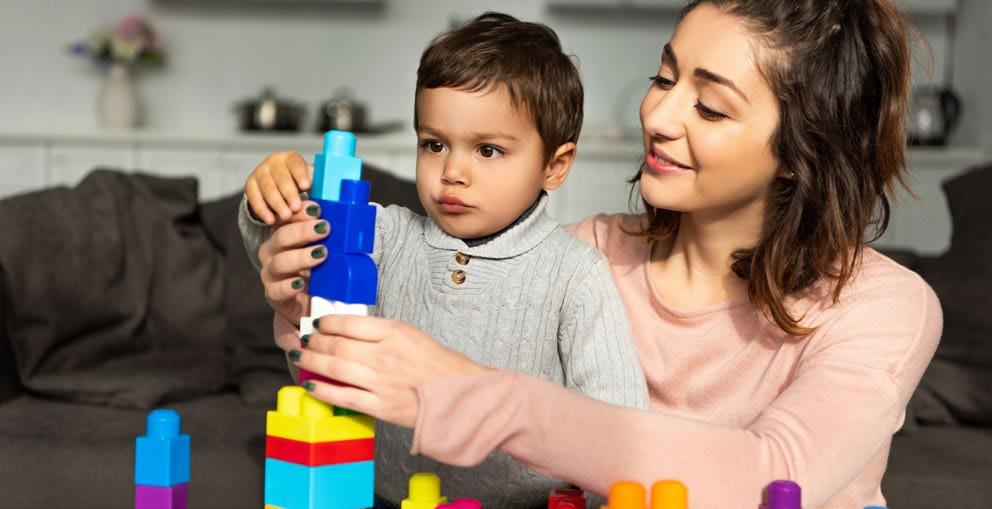
All parents feel guilty about something! For one child parents, it may be not giving them a sibling or that the child spends time a lot of time alone.
Parents of more than one child may feel that they don’t spend enough one-on-one time with their children. You can’t win either way but you can find ways to give your child special one-on-one time when they get you all to themselves, doing what they want to do. We recommend this for all children.
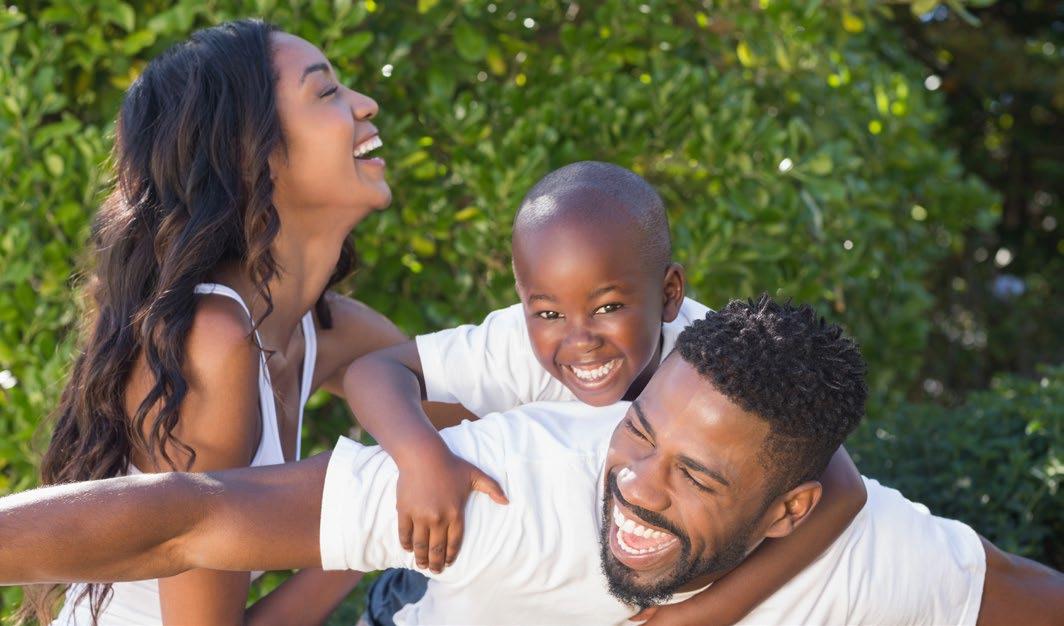
you see your only child disagreeing with a friend, revisit it with a conversation about what they could have done differently.
Sharing does not come naturally until between the ages of 3 and 5. Show single children how to share by modelling it. Offer to divide and share the last slice of pizza. Take turns choosing which movie to watch. Seeing sharing in action makes it so much easier for children to understand.
Delay gratification
It’s so easy to say ‘sure’ when your only child asks for something. If there were a sibling your child might have to wait or completely forego what they want. So remember that ‘No’ or ‘not yet’ can be the right answers sometimes. It’s important your child gets used to waiting, along with clear routines, rules and positive discipline when necessary.
Recognise the downsides
Children with siblings share their unique family experience with allies. There may be cousins and there will be friends but, for a single child, there will never be a family peer or ally – and this will be true throughout their lives; when they reach adulthood they will have to care for ageing parents alone, for instance.
With a strong foundation though, there is no reason why only children have any less chance of growing into strong, independent individuals than their friends with siblings.
Ann Magalhaes is founder of The Parent Team (www.theparent.team), parenting educators offering classes and workshops teaching evidence-based parenting skills and offering parents practical, effective support.
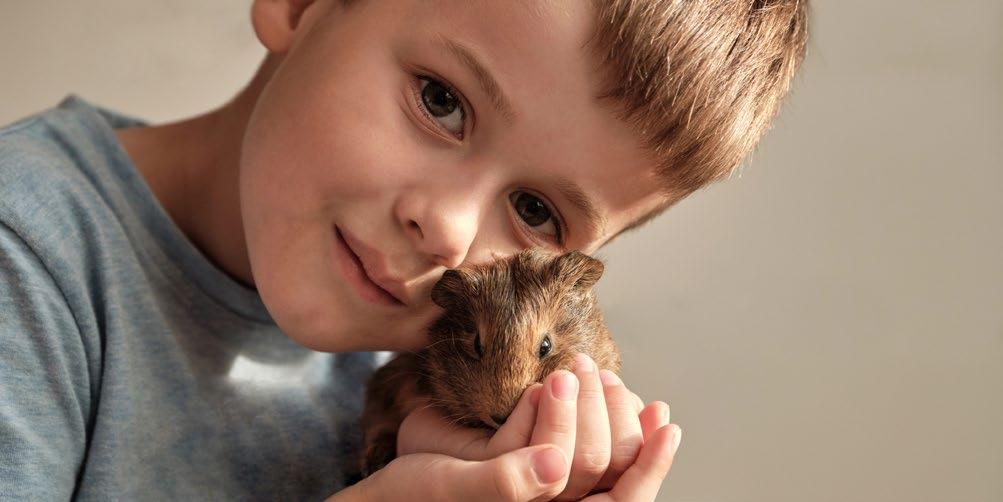
BMC Psychiatry suggests that imaginary friends can be supportive for all children. So, if you notice your child talking about someone you don’t know from anywhere else in their life, invite this friend into your family life!
Only children can get tired of being the focus of attention. A pet can be helpful - a living, furry friend for your child to love and take care of means your child is no longer always the centre of attention.
By Ellie Malt
SO, quick question - do you think it’s okay to just let your kids be bored sometimes?
In a world full of activities, apps and endless entertainment, boredom is rare and our children just aren’t used to that feeling. It’s no wonder we find ourselves wondering ‘what should I do?’ when a child says: ‘I’m bored.’ There’s more than one way to crack this nut so we asked two mums to share their thoughts.
‘Honestly, I think boredom can be brilliant’

‘I know it sounds a bit harsh but I actually think it’s really good for kids to be bored sometimes and I have to stop myself from jumping in with ideas. I try to remind myself: okay, this is her chance to work something out. It’s not always easy - there’s often a bit of grumbling and complaining - but soon, she’ll start making up a game, building some den or digging out a toy she forgot she loved.
To be honest I think it’s in these totally undirected moments that the real creativity happens. They teach her that she doesn’t need constant entertainment or someone else to fix everything for her. Plus, it’s good for her brain to slow down and just... be.
Life isn’t always fast-paced and exciting and I want her to be okay with that too. I genuinely believe boredom can build resilience and independence; things she’s going to need as she grows up. It can be a bit painful to listen to the moaning at first, but in the end, it always seems to lead to something good if I just hold my nerve. I reckon it’s worth it for the creativity and independence that emerge’.
Sophie, mum of a daughter
Sometimes kids just need a little spark to get going. Here are a few easy prompts to try:
Create a simple ‘boredom jar’ with activity ideas they can pick from.
Start a mini art challenge - get them to draw their dream house or invent a new animal.
Build a cosy reading den with blankets and pillows.
Offer an ‘invent something’ challenge with random craft supplies.
‘I’d rather step in before boredom turns into a meltdown’

‘When my little boy says he’s bored, I take it as a bit of a warning flag! I get where other mums are coming from in not stepping in but for me, when my son says he’s bored, it feels like a bit of a cry for help. I don’t mean I jump up and hand him an iPad straight away but I do think it’s my job to guide him a little and help him learn to work it out.
Childhood goes by so fast and I want him to spend it exploring, learning and finding what he loves, not just sitting around feeling stuck. I have tried leaving him but if I leave him too long without any direction, he tends to get frustrated or ends up picking fights with his sister.
Instead, I try to give him a few options: ‘Do you want to build a Lego city or come and help me in the kitchen?’ Nothing amazing, just a suggestion to get him moving again. I see it as teaching him how to manage downtime positively, rather than hoping he’ll figure it out all on his own. Especially with all the distractions kids face today, I think they sometimes need a little help with learning how to use their free time well. It’s not about micromanaging them; it’s about being present enough to keep boredom from turning into something negative. For me, it’s all about balance: a bit of space and a bit of support.’
Laura, mum of two
child is
It’s tough but sometimes the best thing you can do is not rush in. Try these approaches instead:
Acknowledge your child’s feelings (‘Yeah, sometimes it is boring!’) without fixing the situation. Remind them that feeling bored can lead to something fun!
Encourage them to come up with three ideas before you suggest anything.
Stay calm and put up with any whining.
Celebrate when they figure out a way to entertain themselves.
By Usha Patel
Children all learn ball skills at some point and one may expect that a child can catch a ball by age 10. But this is not the case for some children with possible symptoms of neurodivergence.
Those with poor co-ordination often struggle to catch an object the size of a tennis ball or even a beach ball with any success. It is almost as if they see the ball too late and they react by jumping out of the way before it hits them. Understandably, these children become fearful of catching balls. Their throwing skills are likely to be no better; underarm, overarm and aiming the ball at a particular target seem impossible.
My student Alfie was such a case. He was a typical case of a floppy child, unable to catch a ball. His younger brother, age 8, was able to throw and catch just fine and was even in the school football team. Alfie always said he was not interested in football. It could have been that he hated tying laces. Laces were not his friends and he always preferred slip-on shoes to trainers. Alfie had a general level of clumsiness which showed up in many things outside the area of sports:
• poor posture;
• tendency to slump;
• poor at learning to swim;
• messy eater;
• messy handwriting;
• slowness in copying tasks;
• poor hand-eye co-ordination in sport and academics;
• easily distracted and weak focusing skills.
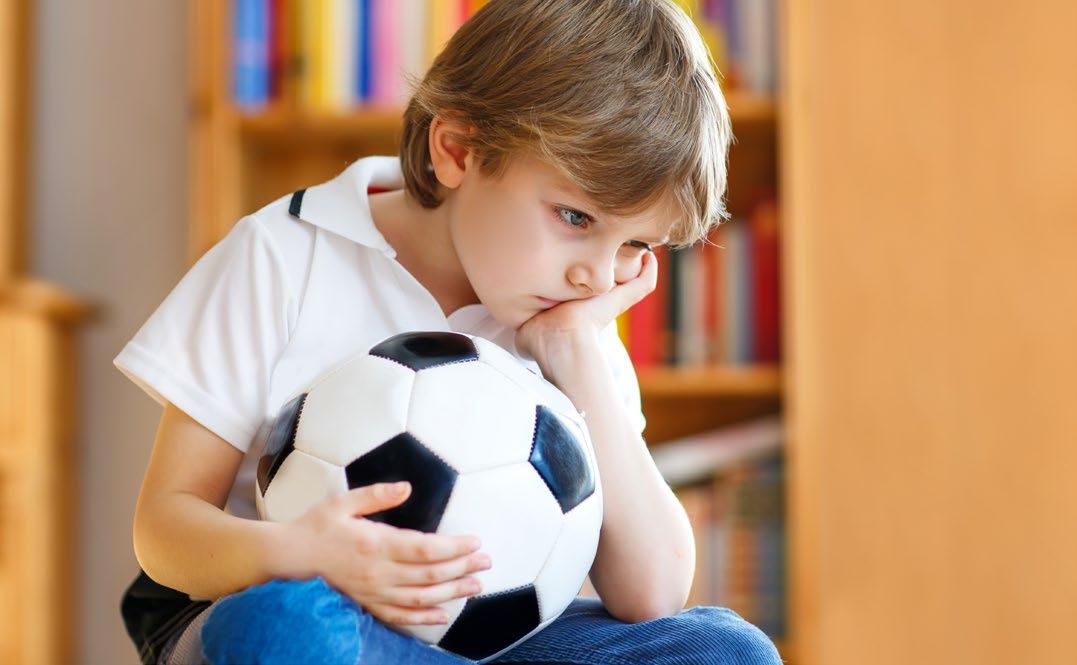
When children show weaknesses like Alfie, there is a common thread that goes deeper than the surface. In my investigations with Alfie, age 10, I trained him to catch and throw with large balls to help develop hand-eye co-ordination as well as working with a balance board, which is designed to help learn and develop better hand-eye co-ordination skills.
How do the eyes adapt to catch a moving target?
The eyes need to converge towards the nose to track a ball that is coming towards them.
Eyes diverge when the ball is thrown away from the body.
Each eye needs to move in a well-coordinated yet partnered team effort, known as binocular vision. Binocular vision and convergence are needed to work well in children for catching and throwing, reading and writing.
Usha Patel is a Neurocognitive Therapist at Raviv Practice London. For advice on any of these issues, visit www.ravivpracticelondon.co.uk

When in the womb, babies live in a world where their bodies are supported in a fluid-filled sack. The survival mechanisms their amniotic fluid provides are a transitional phase that needs to be integrated into a world where their body weight is self-supported.
A baby’s involuntary responses, controlled by the brain stem, are better known as primitive reflexes. These primitive reflexes become the foundational blocks for eventual upright postural reflexes. Each set of primitive reflexes has different purposes and organise other parts of the body.
At around six to nine months, symmetric tonic reflex (STNR) emerges and is integrated by nine to eleven months. The purpose of this reflex is to help a baby get on their hands and knees to crawl. None of us remember it, of course, but this is not an easy skill to learn!
To get it right, babies need to co-ordinate how they support and move their head with how they organise their upper and lower limbs to move and look at their surroundings.
When learning to crawl, babies will tip their head forward but are not used to supporting themselves in this way yet. If they move their head forward, their arms collapse. If they move it back, they collapse on their legs and their arms straighten. You may have noticed a baby kneeling and rocking back and forth to experiment with how to get the balance right.
With the head supported and balanced, they are ready to crawl. At this time, a baby also develops the skills needed to use both eyes together (binocular vision) so that they can focus them when moving. This makes the STNR reflex essential not just for crawling but also for developing the eyes to deal with near and distance vision and focusing on moving objects.
If the STNR reflex is not properly developed as a child, it means infants will continue to struggle with hand-eye coordination later in life. This may be exactly where your child’s trouble catching a ball comes from.
By Jemma Z Smith
Planning a holiday with children requires considering their needs at different ages. I’m fresh from trips to Yorkshire, Blackpool and Barcelona earlier this year with my 9 month old son and so here are my thoughts about travelling with your child.
‘Travelling with child’ is never going to be as straightforward as ‘travelling pre-child’ but seeing your child experience a new culture or eating a new food offers a different form of enjoyment. Babies bring practical concerns such as access to formula, nappies and baby change facilities. Parents may prefer destinations where baby essentials are readily available and accommodation with kitchen facilities. Toddlers, on the other hand, need opportunities to play and burn off energy. Destinations with parks, soft play areas or beaches can be ideal. Parents should also consider the logistics of bringing a stroller and car seat, especially when flying.
As children grow older, they develop their own opinions about holidays. Simple play parks may no longer entertain them and they often want to bring a friend or have activities tailored to their interests. Family-friendly resorts, cruises or self-catering villages like Center Parcs can provide a sense of independence for older children within a controlled environment. For picky eaters, all-inclusive resorts or self-catering accommodation offer stress-free mealtimes.
UK holidays allow parents to take everything they need without luggage-weight restrictions. But remember, domestic trips can sometimes take as long as a European flight, depending on the destination. All-inclusive breaks offer ease and variety, with everything in one location but they can be costly. Additionally,
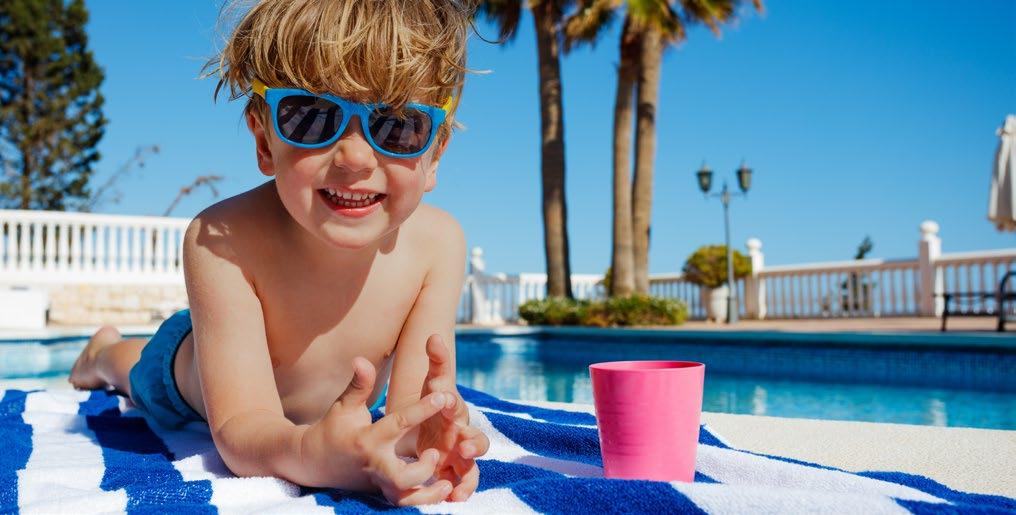
All-inclusive holidays can be a great option for families, offering convenience, entertainment and a variety of food choices. With meals, drinks and activities included, they provide a stress-free experience where parents don’t have to worry about constantly budgeting for extras. They also work well for picky eaters, as buffet-style dining allows children to choose from a range of familiar and new foods without pressure.
However, there are some downsides to consider. All-inclusive resorts can be expensive, especially during peak holiday seasons. Additionally, it’s tempting to just stay in the resort. To make the most of an all-inclusive holiday, plan a mix of resort activities and local excursions to explore the culture.
Check if the resort offers kids’ clubs or teen programmes, which can give older children a sense of independence while parents enjoy some downtime. Research the local area in advance and consider a day trip to a nearby town or attraction. With a balanced approach, an all-inclusive holiday provides relaxation for parents and fun for kids of all ages.

families may miss out on experiencing the local culture if they remain within the resort.
Long journeys can be a challenge but careful planning can help. When travelling by car, setting off during nap times can make the journey easier, with scheduled stops to release energy. For flights, small wrapped toys can entertain younger children. Older kids may benefit from a relaxed screen time rule, with preagreed limits on how many movies they can watch!
While holidays are a time to relax, it’s essential to agree on which rules remain in place. These might include consistent nap routines, balanced meals and routines around bedtimes. Being on the same page prevents children from playing one parent against the other.
Another key consideration is sharing the planning load. If one person has handled the itinerary, packing and researching places to eat, it can be frustrating when the rest of the family don’t want to follow the schedule. Sharing responsibilities for holiday prep can avoid tension arising.
Jemma Z Smith is Director of The Education Hotel. For further advice, visit www.educationhotel.co.uk

For families looking to avoid the hassle of airports, UK holidays can be a fantastic alternative. Without worrying about luggage allowances or long security queues, parents can pack everything they need, from baby essentials to familiar snacks for picky eaters. Driving also allows more flexibility, making it easier to take breaks when travelling with young children.
The UK offers a wide range of family-friendly destinations, from beach holidays in Cornwall to countryside retreats in the Lake District. Holiday parks and self-catering lodges provide space and independence, which can be especially useful for families with toddlers or older children who want more freedom. Additionally, UK holidays can be more budget-friendly, with no need for expensive flights or travel insurance.
However, travel times can still be long. To make the most of a UK holiday, plan stops at family-friendly attractions along the way. It can also be easier to create a multiple destination trip in the UK travelling via trains or driving.
By Emily Kearns
During their first year, babies grow and develop in ways you might never have thought possible. By filling their lives with beneficial games and activities, you can help them learn about the world they live in, having fun along the way. Here are some enjoyable and practical ways to introduce development play with your infant in their first year.
1-4 weeks
Dance together
Dancing with your newborn will help to strengthen their emotional development while promoting a deeper bond with you. Add soothing music and they will relax into your arms while you sway and rock them around the room: think dreamy folk or maybe some ballads. If your go-to involves punchier music, consider Rockabye Baby’s collection of rock, pop and hip-hop songs converted to sweet, soothing, tinkling lullabies for babies and children. Holding your baby close will make them feel safe and protected in their new environment and will also encourage the release of oxytocin, the love hormone.
1-3 months
Sounds around the house
Give your baby a sound tour of your house, allowing them to take in everyday noises as you explain them. Turn on taps, the shower and the hairdryer and see how they respond. Press the buttons on the microwave to make a beep, close cupboards and doors gently, turn keys in locks, knock at the door and ring the doorbell. Making the connection between people and sounds is an early lesson for your baby in cause and effect and it will help to further their cognitive development. Try introducing baby to a new sound every day to help them learn more about the world they’re living in.
3-6 months
Blow raspberries
Learning how to control their tongue and lips is an important precursor to speech. Blowing raspberries is simple and entertaining - stick out your tongue, tighten your lips around it and blow! Now wait for your baby to respond as they learn to take turns and communicate back and forth. They will likely start off puckering their lips together and blowing to create quite a lot of tiny spit bubbles before eventually sticking out their tongue and copying you.
Tummy raspberries
When your baby is lying on their changing mat and before you dress them, press your lips to their tummy and blow air onto it to make a funny noise. They will likely love both the tickling sensation and the silly noise and this in turn will encourage them to make their own raspberry sounds, a precursor to babbling, which leads to talking.
6-9 months
Picture this
The importance of books and reading to your baby’s development can’t be overstated and at this stage in their life, they will really benefit from picture books. These are a form of visual art and are your baby’s first experience of this creative world. Young babies do not understand words, so they absorb information in visual form and use it to learn about things they don’t yet know the names for. Point at the pictures and say what they are to help your baby make the connection between the image and the word. Reading helps your child make strides in their speech and language development. With picture books they are constantly learning about the world and you are in turn feeding their imagination.
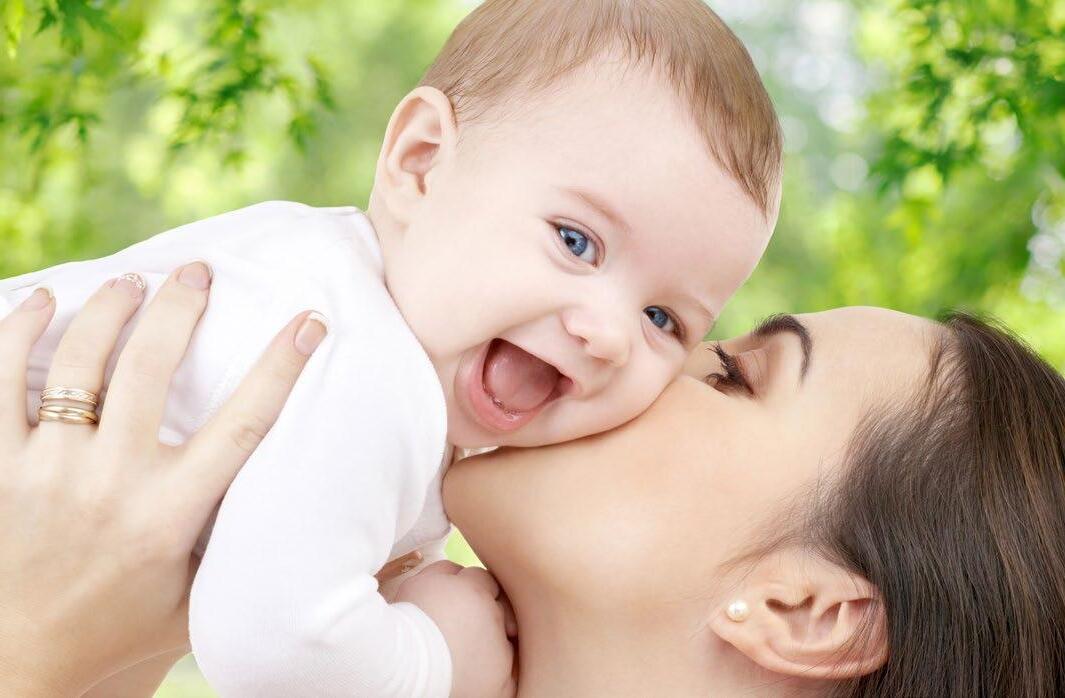
9–12 months
Chase the baby
The jury’s out on exactly why babies enjoy being chased but they genuinely do! It’s been suggested that evolution is involved and that playing chase simulates predator-prey relationships, which helps to build natural survival skills.
Then there’s the so-called ‘thrill of the chase’ and a new sense of autonomy as once your baby can crawl, they have more control over their body and can move from one place to another. Babies also expect you to catch them, which they look forward to because, of course, you are their everything.
This activity will help to strengthen their arm, leg, core and neck muscles, while building their social awareness and sense of trust in you.
Emily Kearns is the author of The Baby Play Guide: Practical Ways to Introduce Developmental Play with Your Baby in Their First Year published by Vie (£10.99).





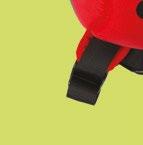




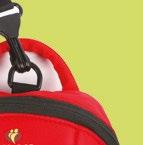
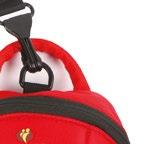


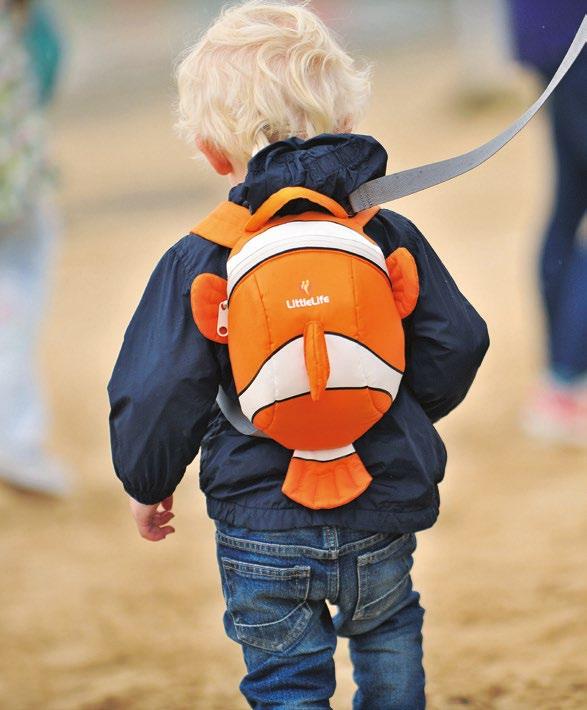
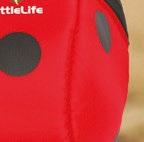

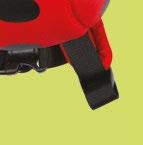





Compiled by Tracy Doyle
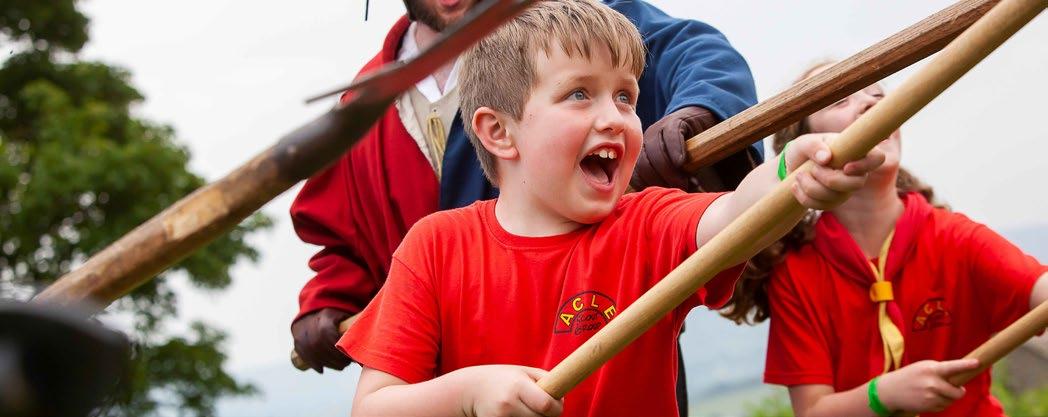
1940s Weekend at The Black Country Museum, Dudley
On 12-13 July, walk the historic streets of shops, houses and industrial workplaces and experience them brought to life with re-enactors, vintage vehicles, historic display and fascinating stories. The perfect setting to get into the Blitz spirit.
www.bclm.com/1940sweekend
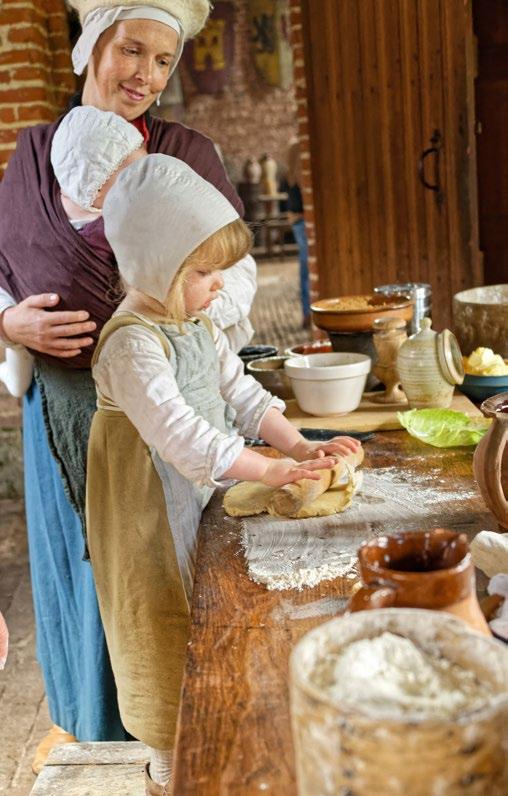
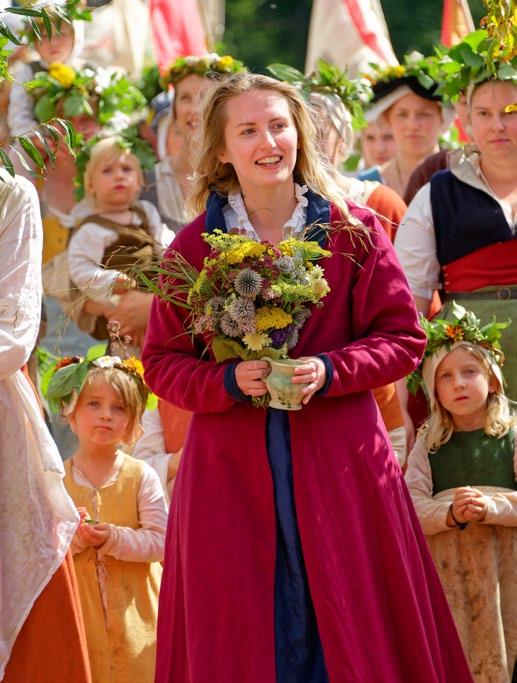
Living History Civil War Siege Weekend at Bolton Castle
From 23-25 August, discover the story of life at the castle following the execution of King Charles I in 1649 and its eventual surrender. Perfect for families, Living Historians will explain about daily life, arms and armour at that time. Admission included with castle entry.
www.bit.ly/boltonlh
Tudor Hands On Event at Kentwell Hall, Suffolk
This incomparable and immersive event runs from 9-21 August. Tudor England is brought to life by over two hundred skilled Living Historians, including gentry, homeless, babes in arms and elders, working and playing throughout the buildings and grounds. Try your hand at some of the tasks of daily life - knead bread, learn a dance, churn butter, pound herbal remedies, spin some wool and maybe even help to make a silk braid.
www.kentwell.co.uk/ handsonhistory
Kentwell Through the Ages II at Kentwell Hall, Suffolk
From 23-25 August, see over 2,000 years of history in one day, time travelling from the Stone Age to the 1970s. Each period is in its own setting, all properly equipped and costumed. Kentwell’s re-enactors are expert Living Historians and visitors are encouraged to listen, question, help with tasks and take part in some of the activities.
www.kentwell.co.uk/ thrutheages2

Europe’s Largest 13th Century Battle Re-Enactment, Evesham
This FREE event runs from 1-3 August and features a medieval festival and camp with demonstrations of cookery, weapons and medicine, dancing and music, falconry and equestrian. On Saturday there is a parade of mounted knights in full armour. Hundreds of reenactors fight ‘to the death’ on Saturday and Sunday.
www.battleofevesham.co.uk

Little Woodham Craft Day, Little Woodham, Hampshire
Enter real homes and immerse yourself in everyday life in the 17th century at Little Woodham. You can visit most weekends during the school holidays (check website) and on 25 August, visit for its annual Craft Day, where local crafters come together to showcase their unique creations.
www.littlewoodham.org.uk/ special-events
Viking Re-Enactment at Stafford Castle, Stafford
The Vikings are returning to Stafford Castle on 2-3 August! Activities include ‘Have-a-go javelin,’ ‘Kiddie-Vike,’ Viking talks and demonstrations including large scale battles, weaving, weapon usage and cooking. All this alongside Viking games, food stalls, birds of prey and a children’s workshop.
www.bit.ly/staffordlh
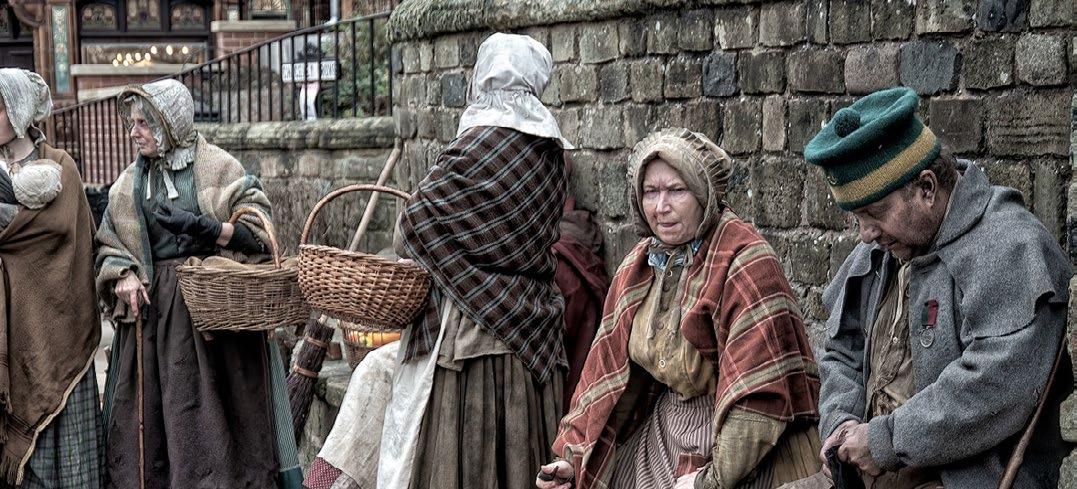
The year is 1851 and the newly opened Great Exhibition in London is showcasing all that is new and innovative about Queen Victoria’s kingdom. But what was life really like for the ordinary, poor folk, away from the glitz and glamour? On 30 and 31 August, the awardwinning living history group, The Ragged Victorians give us a taste of working class life on the edge of society.
www.wealddown.co.uk/events/victorian-life
By Renee Kohley

Even the toughest little veggie critics in the house will fall in love with these ooey-gooey quesadillas!
There is something magical that happens to veggies when you roast them, as they become sweet with the caramelised sugars that naturally occur in the vegetables. Soft, easy-to-eat roasted vegetables, yummy cheese and a creamy, proteinpacked bean spread make these quesadillas a well-rounded (and fun) lunch (or lunchbox) idea for any day of the week.
Makes 4 to 6 quesadillas (depending on the size of the tortillas; older children will eat one or two tortillas while younger children will eat half of a tortilla).
As there is quite a long list of ingredients, we have put these and the method for Garden Party Quesadillas online. Just visit www.bit.ly/recipegpq or scan the QR code!
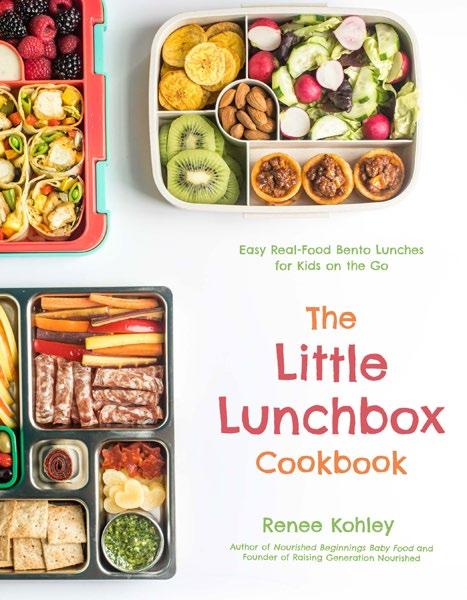

These recipes feature in The Little Lunchbox Cookbook by Renee Kohley and are reprinted with permission of Page Street Publishing Co. 2020.
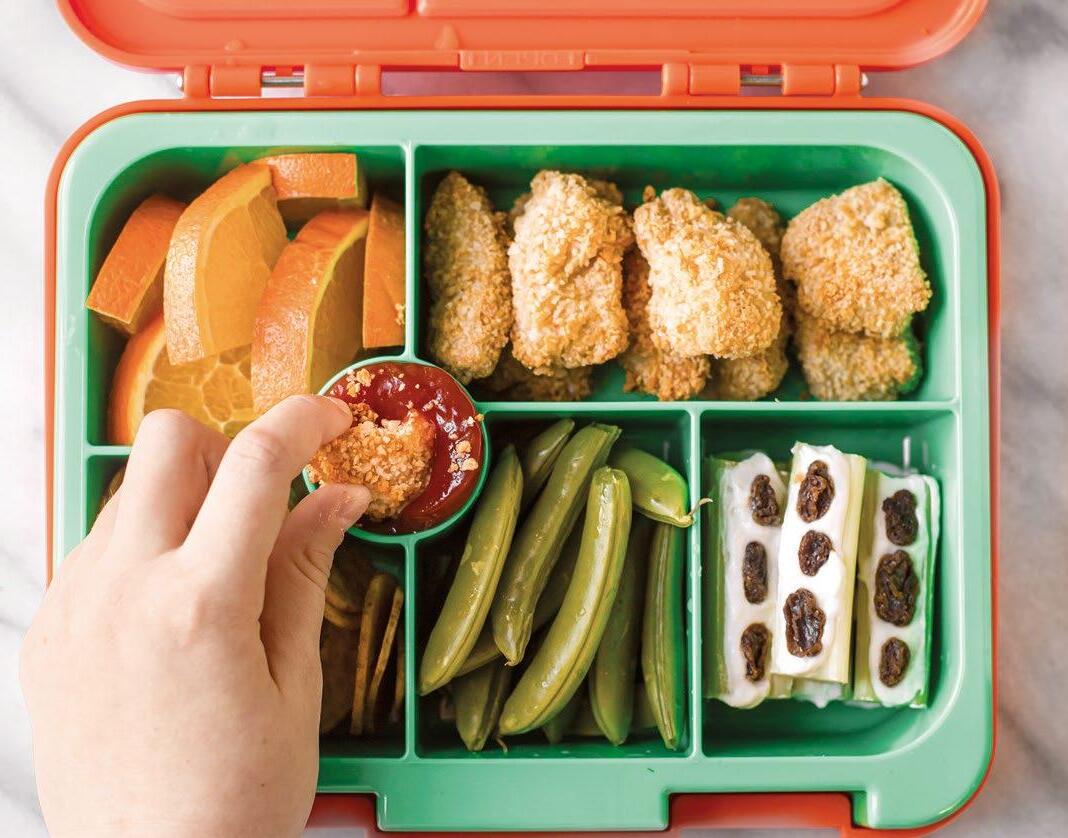
Is it really this simple to make chicken nuggets? My goal in developing this recipe was to get you away from boxed or bagged frozen nuggets with mile-long lists of ingredients and I can promise these crispy nuggets will not disappoint. With a short ingredient list and a five minute prep, you’d never know these nuggets are baked instead of fried with their crispy exterior, juicy interior and amazing flavour!
Chicken nuggets will last three days in the refrigerator. To freeze the cooked chicken nuggets, cool them completely and freeze in a freezer-safe bag for up to three months. You can put the chicken nuggets into lunchboxes frozen and they will thaw by lunchtime.
This recipe also doubles perfectly - just use two baking sheets. Doubling will help with having enough leftovers from dinner to stash in your freezer for tomorrow’s lunch or a picnic.
Serve the nuggets with your kids’ favourite dipping sauce, such as ketchup or honey mustard.
Makes about 28 (1-inch [2.5-cm]) chicken nuggets
1 cup (55 g) gluten-free panko bread crumbs
1 tsp sea salt
1 large egg
1 lb (450 g) boneless, skinless chicken breasts
Avocado or olive oil spray, as needed
Preheat the oven to 425°F (218°C). Line a large baking sheet with a silicone baking mat or unbleached parchment paper.
Put the bread crumbs and sea salt in a gallon zip-top bag and shake to combine them. In a small bowl, whisk the egg. Set aside the bread crumbs and egg.
Lightly pat the chicken dry and cut it into 1-inch (2.5-cm) pieces.
Transfer the chicken to the bowl with the egg and stir to combine, so that every piece of chicken is coated in egg.
Put the coated chicken pieces into the bag of bread crumbs. Close the bag and shake it to coat the chicken in the crumbs. Place the breaded chicken nuggets on the prepared baking sheet.
Photo credit: Becky Winkler. Tip: If your kids like honey mustard to dip, simply stir up a 2:1 ratio of mustard to raw honey for an easy, fun dipping sauce!
Spray the nuggets with the oil spray. Bake them for twenty minutes, until they are golden brown on top.
Place the cooked nuggets on a wire rack to cool.
Dressing
Express




